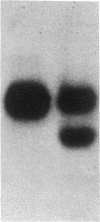Abstract
To ascertain the mechanism for decreased synthesis of C1 inhibitor (C1 INH) in certain patients with the autosomal dominant disorder hereditary angioneurotic edema, we studied expression of C1 INH in fibroblasts in which the mutant and wild type mRNA and protein could be distinguished because of deletion of exon 7 (delta Ex7). In the HANE delta Ex7 cells, the amount of wild type mRNA (2.1 kb) was expressed at 52 +/- 2% (n = 5) of normal, whereas the mutant mRNA was 17 +/- 1% (n = 5) of normal. Rates of synthesis of both wild type and mutant proteins (11 +/- 3 and 3 +/- 1% of normal, respectively) were lower than predicted from the mRNA levels. There was no evidence of increased C1 INH protein catabolism. These data indicate that there are multiple levels of control of C1 INH synthesis in type I hereditary angioneurotic edema. Pretranslational regulation results in < 50% of the mutant truncated 1.9-kb mRNA. In addition, translational regulation results in decreased synthesis of both wild type and mutatn C1 INH proteins. These data suggest a transinhibition of wild type C1 INH translation by mutant mRNA and/or protein.
Full text
PDF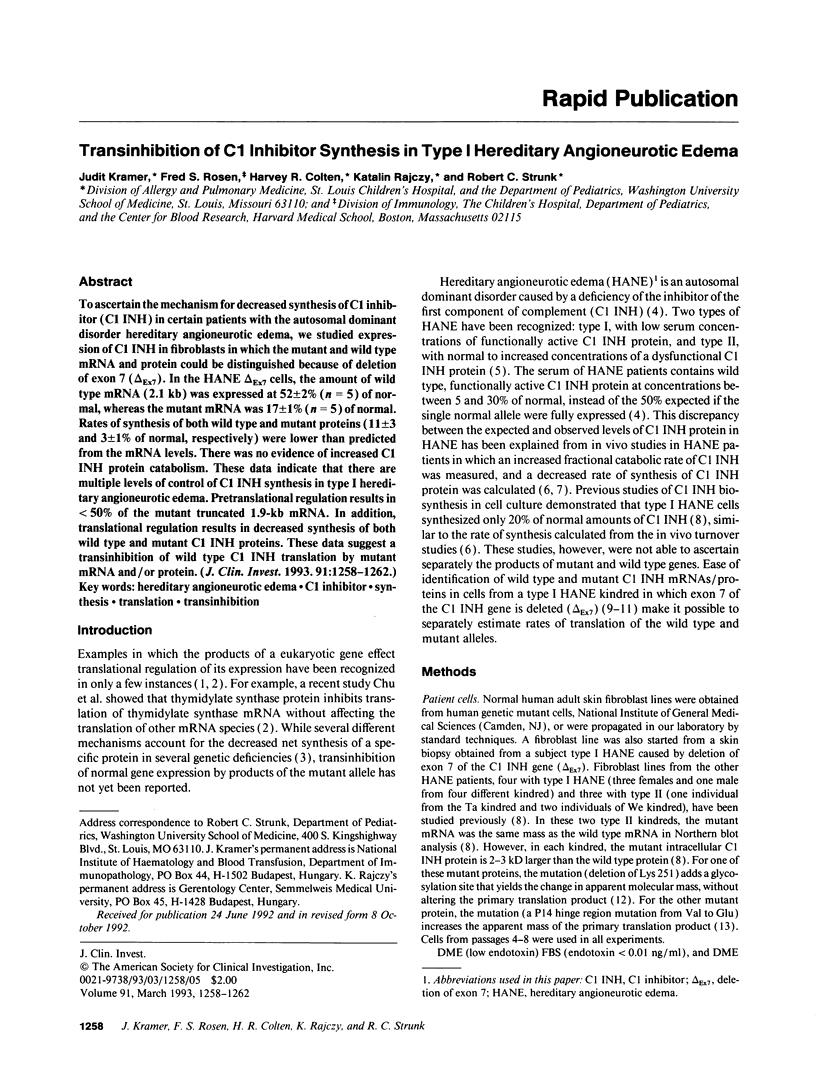
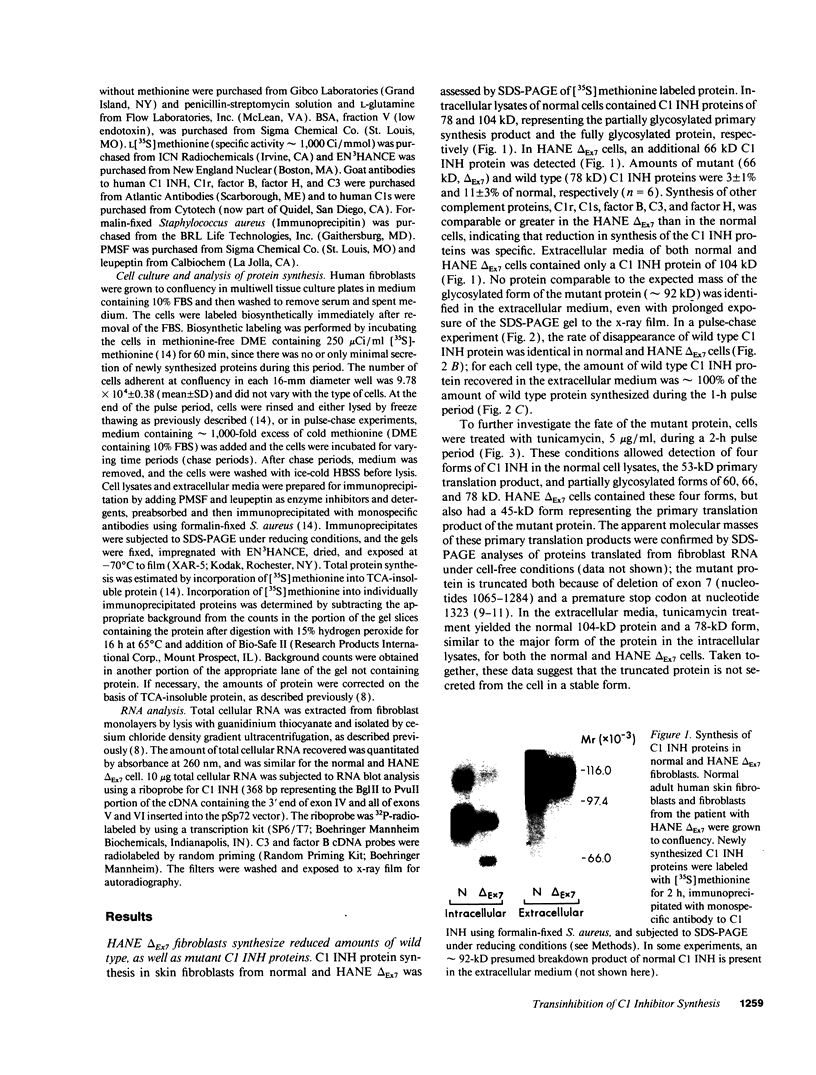
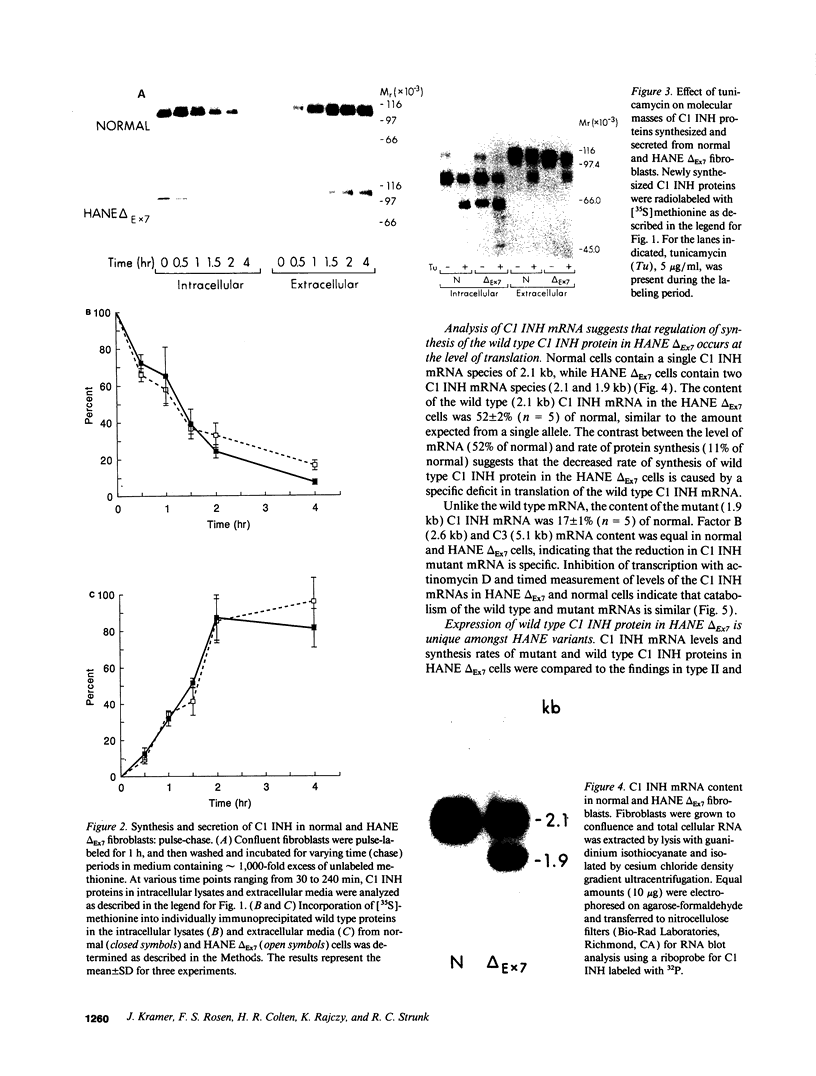
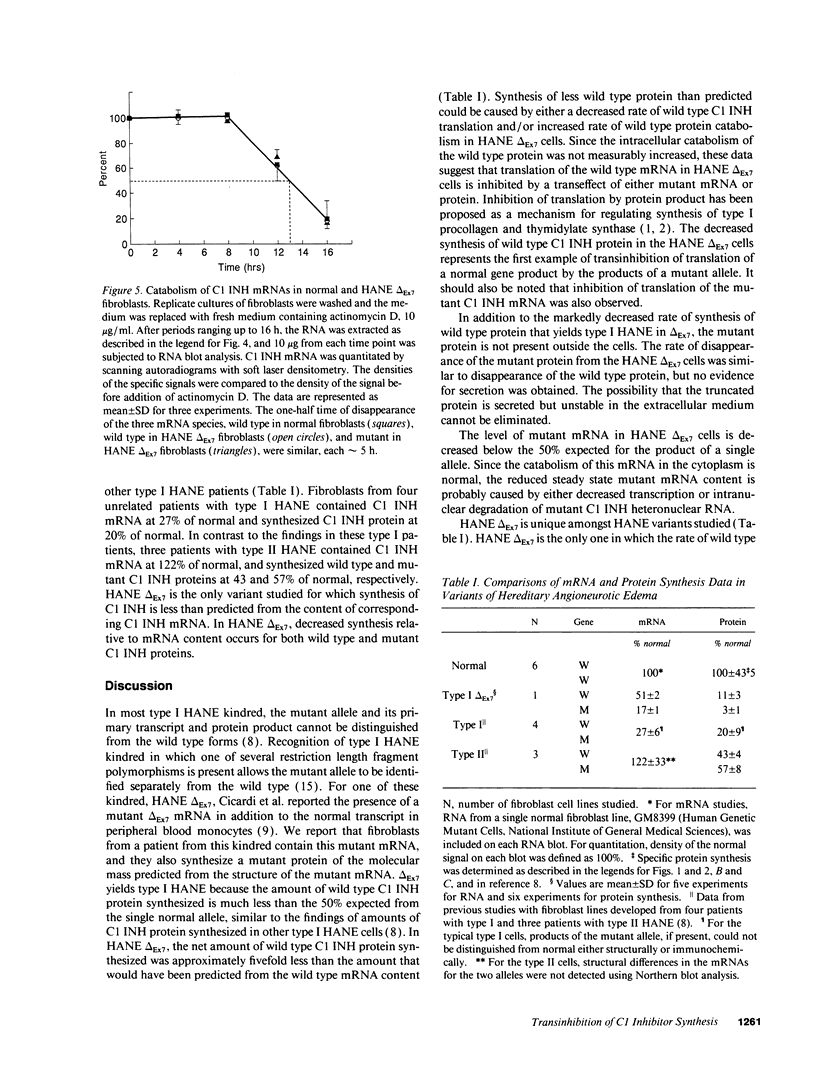

Images in this article
Selected References
These references are in PubMed. This may not be the complete list of references from this article.
- Ariga T., Carter P. E., Davis A. E., 3rd Recombinations between Alu repeat sequences that result in partial deletions within the C1 inhibitor gene. Genomics. 1990 Dec;8(4):607–613. doi: 10.1016/0888-7543(90)90246-q. [DOI] [PubMed] [Google Scholar]
- Ariga T., Igarashi T., Ramesh N., Parad R., Cicardi M., Davis A. E., 3rd Type I C1 inhibitor deficiency with a small messenger RNA resulting from deletion of one exon. J Clin Invest. 1989 Jun;83(6):1888–1893. doi: 10.1172/JCI114095. [DOI] [PMC free article] [PubMed] [Google Scholar]
- Chu E., Koeller D. M., Casey J. L., Drake J. C., Chabner B. A., Elwood P. C., Zinn S., Allegra C. J. Autoregulation of human thymidylate synthase messenger RNA translation by thymidylate synthase. Proc Natl Acad Sci U S A. 1991 Oct 15;88(20):8977–8981. doi: 10.1073/pnas.88.20.8977. [DOI] [PMC free article] [PubMed] [Google Scholar]
- Cicardi M., Igarashi T., Rosen F. S., Davis A. E., 3rd Molecular basis for the deficiency of complement 1 inhibitor in type I hereditary angioneurotic edema. J Clin Invest. 1987 Mar;79(3):698–702. doi: 10.1172/JCI112873. [DOI] [PMC free article] [PubMed] [Google Scholar]
- Cole F. S., Auerbach H. S., Goldberger G., Colten H. R. Tissue-specific pretranslational regulation of complement production in human mononuclear phagocytes. J Immunol. 1985 Apr;134(4):2610–2616. [PubMed] [Google Scholar]
- Davis A. E., 3rd C1 inhibitor and hereditary angioneurotic edema. Annu Rev Immunol. 1988;6:595–628. doi: 10.1146/annurev.iy.06.040188.003115. [DOI] [PubMed] [Google Scholar]
- Donaldson V. H., Harrison R. A., Rosen F. S., Bing D. H., Kindness G., Canar J., Wagner C. J., Awad S. Variability in purified dysfunctional C1(-)-inhibitor proteins from patients with hereditary angioneurotic edema. Functional and analytical gel studies. J Clin Invest. 1985 Jan;75(1):124–132. doi: 10.1172/JCI111664. [DOI] [PMC free article] [PubMed] [Google Scholar]
- Fouser L., Sage E. H., Clark J., Bornstein P. Feedback regulation of collagen gene expression: a Trojan horse approach. Proc Natl Acad Sci U S A. 1991 Nov 15;88(22):10158–10162. doi: 10.1073/pnas.88.22.10158. [DOI] [PMC free article] [PubMed] [Google Scholar]
- Kazazian H. H., Jr, Boehm C. D. Molecular basis and prenatal diagnosis of beta-thalassemia. Blood. 1988 Oct;72(4):1107–1116. [PubMed] [Google Scholar]
- Kramer J., Katz Y., Rosen F. S., Davis A. E., 3rd, Strunk R. C. Synthesis of C1 inhibitor in fibroblasts from patients with type I and type II hereditary angioneurotic edema. J Clin Invest. 1991 May;87(5):1614–1620. doi: 10.1172/JCI115175. [DOI] [PMC free article] [PubMed] [Google Scholar]
- Lachmann P. J., Rosen F. S. The catabolism of C1(-)-inhibitor and the pathogenesis of hereditary angio-edema. Acta Pathol Microbiol Immunol Scand Suppl. 1984;284:35–39. [PubMed] [Google Scholar]
- Parad R. B., Kramer J., Strunk R. C., Rosen F. S., Davis A. E., 3rd Dysfunctional C1 inhibitor Ta: deletion of Lys-251 results in acquisition of an N-glycosylation site. Proc Natl Acad Sci U S A. 1990 Sep;87(17):6786–6790. doi: 10.1073/pnas.87.17.6786. [DOI] [PMC free article] [PubMed] [Google Scholar]
- Quastel M., Harrison R., Cicardi M., Alper C. A., Rosen F. S. Behavior in vivo of normal and dysfunctional C1 inhibitor in normal subjects and patients with hereditary angioneurotic edema. J Clin Invest. 1983 Apr;71(4):1041–1046. doi: 10.1172/JCI110831. [DOI] [PMC free article] [PubMed] [Google Scholar]
- Rosen F. S., Alper C. A., Pensky J., Klemperer M. R., Donaldson V. H. Genetically determined heterogeneity of the C1 esterase inhibitor in patients with hereditary angioneurotic edema. J Clin Invest. 1971 Oct;50(10):2143–2149. doi: 10.1172/JCI106708. [DOI] [PMC free article] [PubMed] [Google Scholar]
- Stoppa-Lyonnet D., Duponchel C., Meo T., Laurent J., Carter P. E., Arala-Chaves M., Cohen J. H., Dewald G., Goetz J., Hauptmann G. Recombinational biases in the rearranged C1-inhibitor genes of hereditary angioedema patients. Am J Hum Genet. 1991 Nov;49(5):1055–1062. [PMC free article] [PubMed] [Google Scholar]






